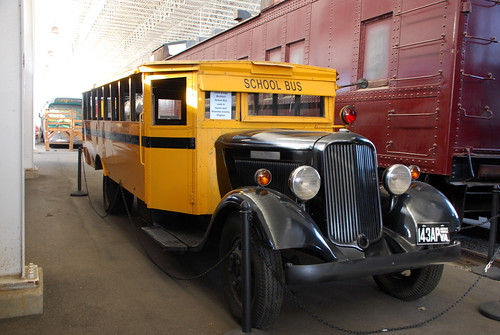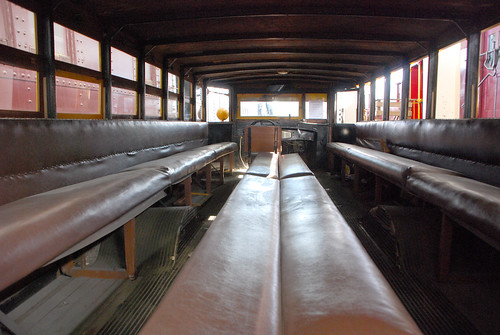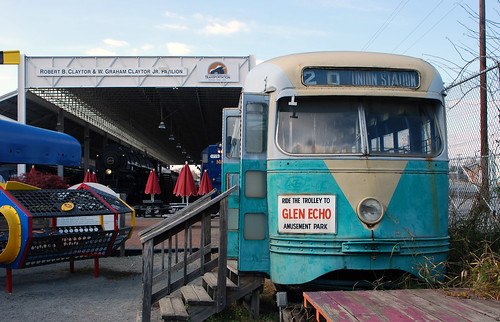Happy birthday, DC Streetcar! Yesterday was the first anniversary of opening day. This year hasn't been perfect, but the streetcar steadily gained riders and has generally beaten expectations.
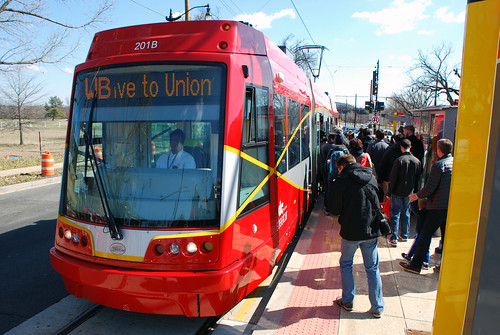
According to monthly ridership reports, January 2017 was the streetcar's busiest month yet, in both total riders for the month and in average riders per weekday.

January 21, the day of the Women's March, was the busiest single day since opening day itself, with 7, 347 riders. That was a Saturday, though, and obviously a unique event.
The bigger story is how weekday ridership has grown over the year. For most of the streetcar's first six months open, more people rode on Saturdays than on any weekday. But as people have become familiar with the streetcar, it's evolved from curiousity to reliable fact of life. The number of people riding just to check it out has dropped, while those using it to commute has shot up.
In January, for the first time, ridership passed above 3, 000 per weekday. At that level, the streetcar is performing at 236% of DDOT’s pre-opening estimate of 1, 300 daily riders.
That's far below the roughly 14, 000 people who ride H Street buses every day, but it's not bad given the shortness of the line, and the trend is strongly positive.
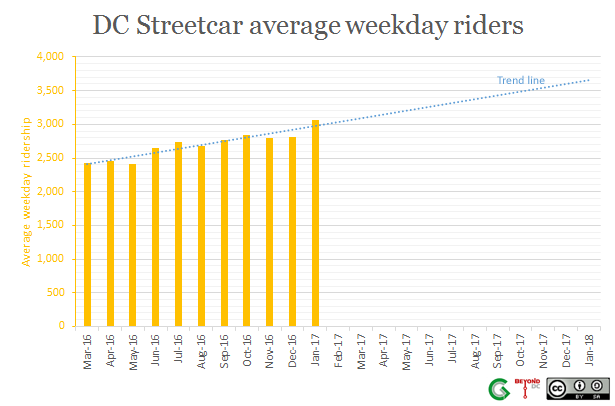
Far from perfect, but better than expectations
The streetcar would still fare better with dedicated lanes, and the crossovers at 3rd Street and Starburst still slow most trips. Those problems absolutely exist. But they haven't derailed the entire operation.
According to Martin DiCaro's WAMU story on the anniversary, the streetcar is marginally faster than the X2 thanks to fewer stops and faster loading, and is doing so well that DDOT is considering improving service to run every nine minutes.
For a line that had the roughest of openings, it's been a surprisingly good year.
 Comment on this at the version cross-posted to Greater Greater Washington.
Comment on this at the version cross-posted to Greater Greater Washington.
February 28th, 2017 | Permalink
Tags: streetcar, transportation












